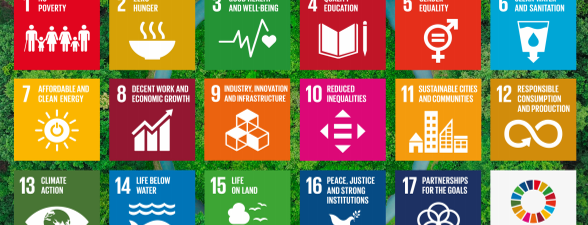Current announced infrastructure spending plans make it the “number one” sector for global capital investment over the next ten years. Although, the infrastructure sector is intrinsically environmentally challenging in terms of greenhouse gas emissions, environmental pollution, habitat destruction and species extinction, we also believe there is an immense opportunity to promote responsible investment in this sector.
Solutions …
Our investments in European private equity infrastructure provide concrete solutions to various societal needs: knowledge infrastructure such as optic fibre networks or universities, energy saving, renewable energy production, waste treatment, water purification, reduced travel times, improved transport comfort and safety and/or improved healthcare.
… but also impact
The investment time horizon for our real assets is long, and our influence on projects is considerable; we usually take majority ownership positions. As a result, ESG analysis is a key part of our due diligence process, and an assessment of the impact of these assets on key sustainability objectives is important. Using the Sustainable Development Goal (SDG) framework, we identify the KPIs that are most material and we collect them on an annual basis. Objectives are agreed over time, so that we ensure the projects meaningfully contribute towards the achievement of the SDGs.
For our first two funds we have identified six priority SDGs which correspond to our ESG focus areas:
- SDG 3 – Good Health & Well-being: we invest in the management of hospitals in Italy and Spain. These two hospitals house around 1’400 beds and provide services to a population of approx. 1.1 million people. In 2022, 686’962 patients were admitted to our investee hospitals, an increase of 7% due to the post-covid “return to normal” situation. Moreover, our fibre networks assets are key to enabling innovation in delivering online healthcare to residents across France.
- With more than 154’500 m2 of education facilities, our portfolios contribute to SDG 4 – Quality Education through the building and maintenance of schools and university buildings. In total, these premises can welcome more than 43’000 students.
- Our funds contribute to SDG 6 – Clean Water & Sanitation through investment in water treatment companies, improving water efficiency via treatment and recycling. In 2022, the volume of water treated was 63.4 million m3 and the volume of wastewater treated was 50 million m3.
- With more than 755 GWh of green energy produced in 2022, we strongly contribute to SDG 7 – Affordable & Clean Energy through our investments in building and operating renewable energy assets, mostly in wind, hydro and from this year also in solar. We also encourage improving energy efficiency and the adoption of clean energy sources across the other assets in our portfolio. For example, our data centre assets have now switched to 100% green energy sources.
- All our portfolio companies contribute to SDG 8 – Decent Work & Economic Growth and SDG 9 – Industry, Innovation & Infrastructure, either by creating new jobs or by investing locally through CAPEX or by contributing to local council finances through payment of taxes. The focus of our funds is to finance new projects or projects already in operation but with CAPEX and development needs. These are often projects that boost local employment and economic activity in remote areas. This is particularly relevant for our wind projects. Moreover, our fibre optic projects allow households and businesses to access a high-speed Internet network.
Biodiversity and Climate are key
Moreover, for our investments in private equity infrastructure, biodiversity is of high importance in both the due diligence phase and the entire management period of the asset. Many of our investments are greenfield projects, which require in-depth studies on the impact of the nature on the biodiversity of the area. When we manage the assets, we also pay particular attention to biodiversity. Especially so for the wind turbine farms, where prevention of birds and bats colliding with the turbines is of high importance.
Climate change adaptation and mitigation form a core part of stewardship activities for our real assets. This applies both at the project investment stage – as it relates to influencing the projects to shift to renewable energy sources – and through management of the project post-investment.

